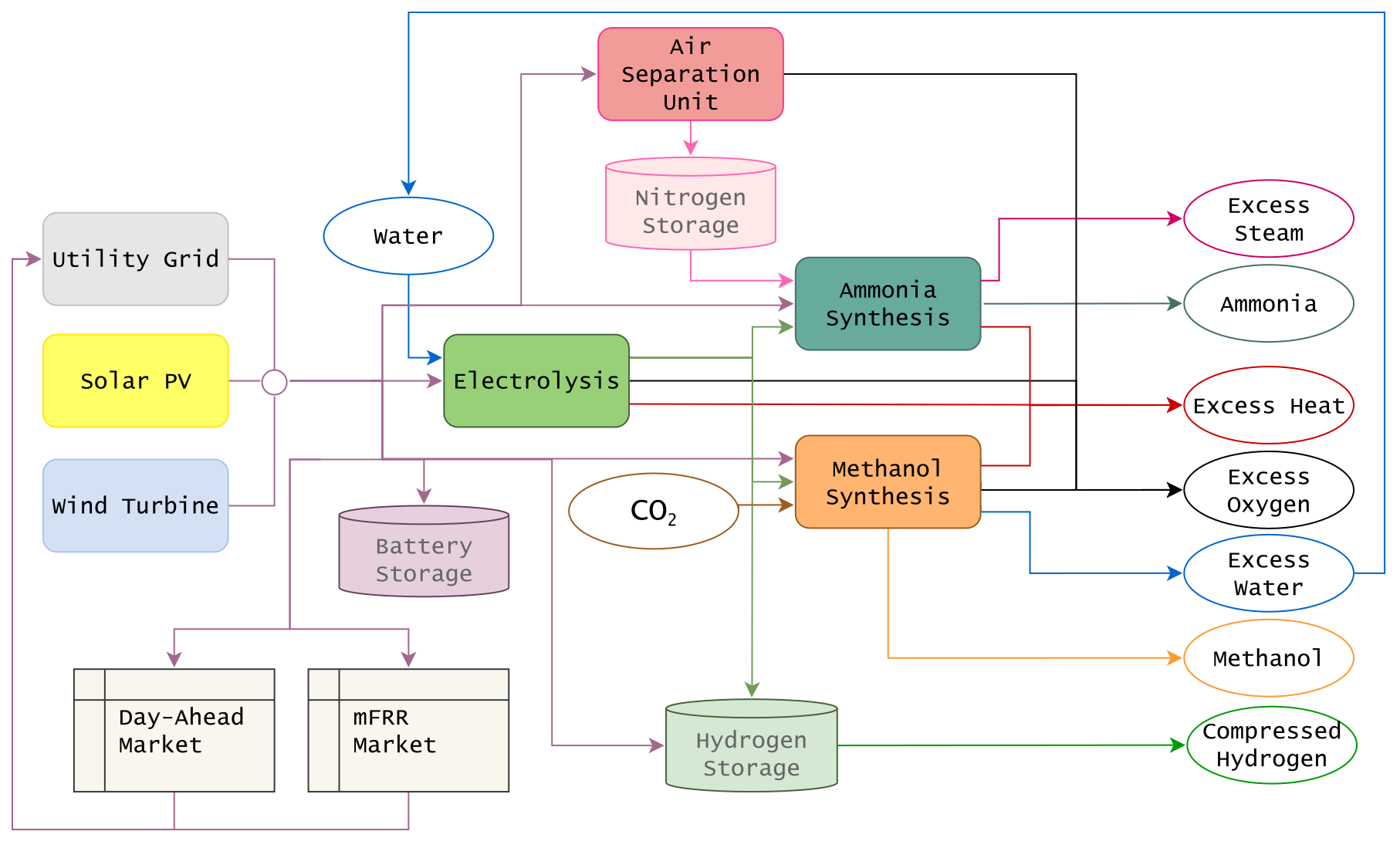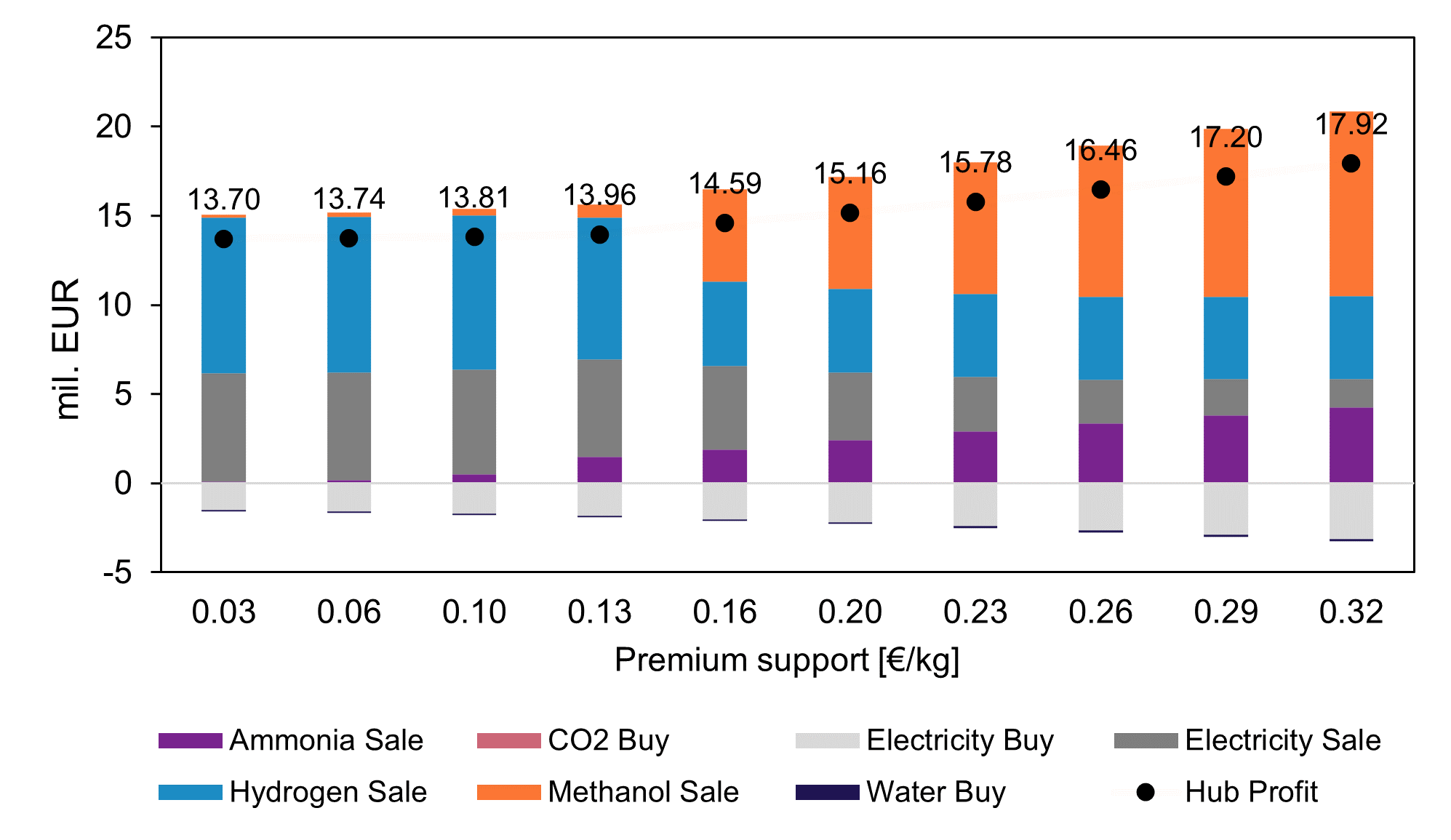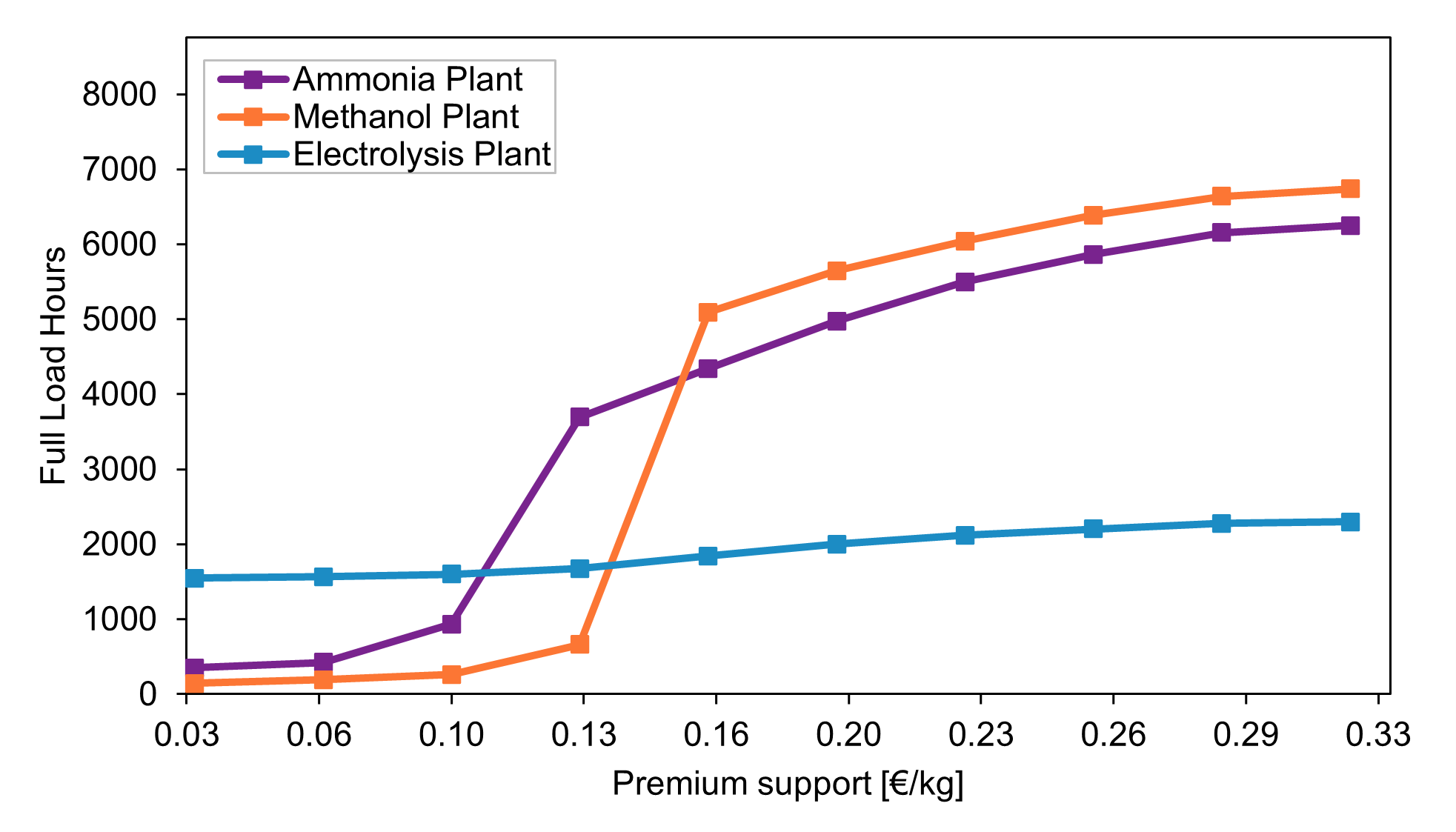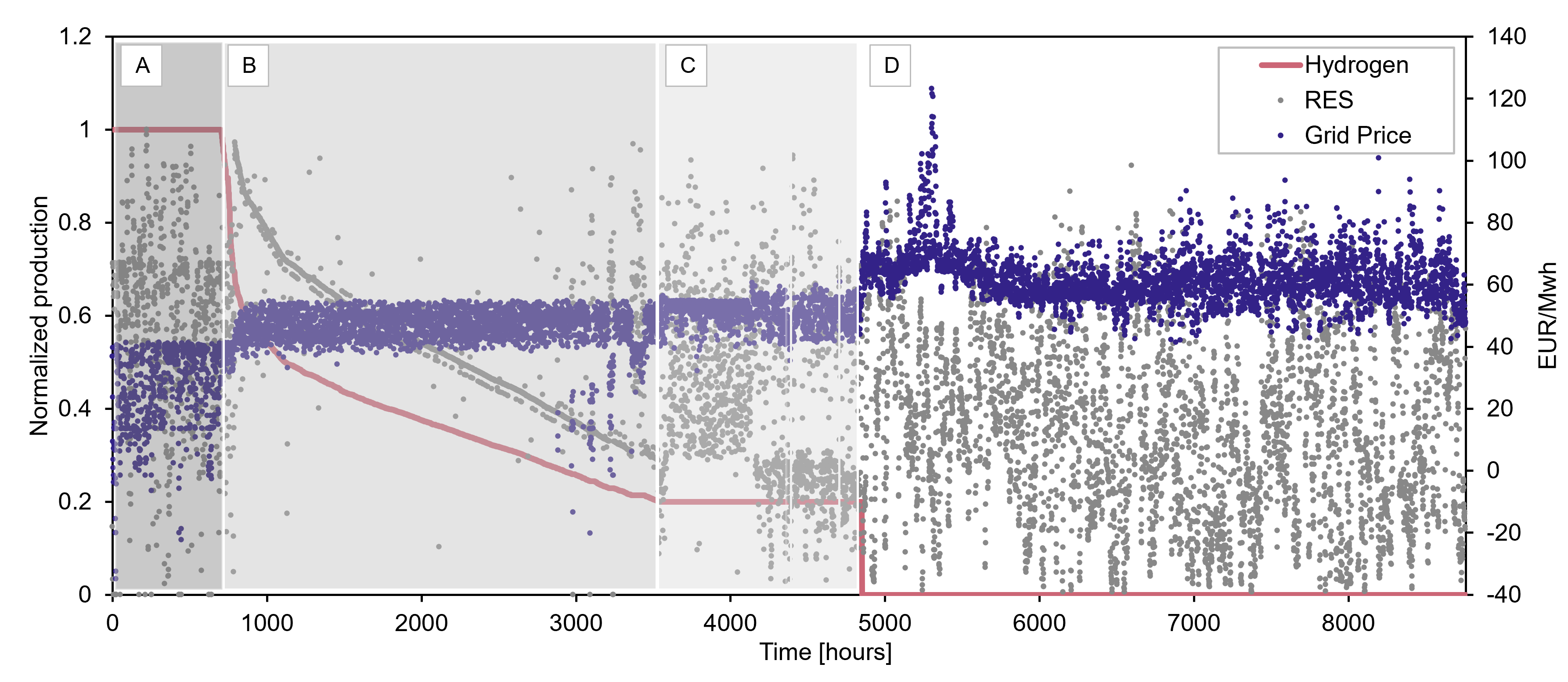Introduction
Recently, the European Commission recommended guidelines for the production of renewable fuels, as these are necessary to decarbonize the parts of the industrial and heavy transport sectors that are difficult-to-electrify. Power-to-X (P2X) energy hubs make it possible for energy infrastructures, production, and storage facilities to collaborate efficiently. In this study, we investigate the optimal operation of an energy hub by utilizing the flexibility of P2X, which includes hydrogen, methanol, and ammonia synthesizers, by examining possible revenue streams such the day-ahead and ancillary services markets.
 Figure 1: GreenLab Skive energy hub technology flow chart.
Figure 1: GreenLab Skive energy hub technology flow chart.
Objectives
- What operational characteristics occur using P2X in energy hubs?
- Can P2X flexibility help energy hubs economically by offering ancillary services?
- What amount of renewable fuel premiums is required for P2X in energy hubs to be economically viable?
Methology
We suggest EnerHub2X, a mixed-integer linear program that takes into account the technical limitations of P2X, such as unit commitment and non-linear efficiency, and maximizes the hub's profit based on current market prices. The EnerHub2X framework was developed to capture the dynamic and complexity of P2X and offer details on the optimal dispatch and operational bottlenecks. It accurately converts energy carriers while taking into account technical and operational constraints to flexibly model various processes and conversion technologies.
Data Analysis
We include the spot, renewable fuel, and ancillary service markets to examine prospective revenue streams for P2X assets in energy hubs (see Figure 2). We add to the discussion on renewable fuel premiums by quantifying the level of renewable fuel premiums required for economic viability using the GreenLab Skive example and the renewable fuel requirements of the European Commission (2022b).
 Figure 2: Graphical description of the four investigated energy hub configurations and two policy scenarios.
Figure 2: Graphical description of the four investigated energy hub configurations and two policy scenarios.
Results
Without additional economic incentives, we find that a representative Danish energy hub sells primarily renewable power and generates compressed hydrogen. Only when prices of renewable fuel are increased by around 50% (0.16 €/kg), will enough renewable ammonia and methanol be produced (see Figure 3 and 4).
 Figure 3: Revenues and costs assuming different renewable premiums in Scenario B. On-grid.
Figure 3: Revenues and costs assuming different renewable premiums in Scenario B. On-grid.
 Figure 4: Electrolysis, ammonia, and methanol plant full-load hours assuming different renewable premiums in Scenario A. Off-grid.[1]
Figure 4: Electrolysis, ammonia, and methanol plant full-load hours assuming different renewable premiums in Scenario A. Off-grid.[1]
Overall, we distinguish four distinct production zones based on the cost of power, the availability of renewable energy, and technical limitations (see Figure 5).
 Figure 5: Operational bottlenecks of Configuration 3 (left y-axis: normalized hydrogen and RES production, right y-axis: grid price).
Figure 5: Operational bottlenecks of Configuration 3 (left y-axis: normalized hydrogen and RES production, right y-axis: grid price).
Conclusion
On-site renewable energy sources and P2X need to be carefully coordinated to be used as efficiently. We demonstrate the flexible use of renewable power purchase agreements when adhering to the renewable fuel standards established by the European Commission.
References
[1] I. Kountouris, L. Langer, R. Bramstoft, M. Münster, and D. Keles (2023), “Power-to-X in Energy Hubs: A Danish Case Study of Renewable Fuel Production”, Working Paper under Review.
Authors
Ioannis Kountouris | Lissy Langer | Rasmus Bramstoft | Marie Münster | Dogan Keles
